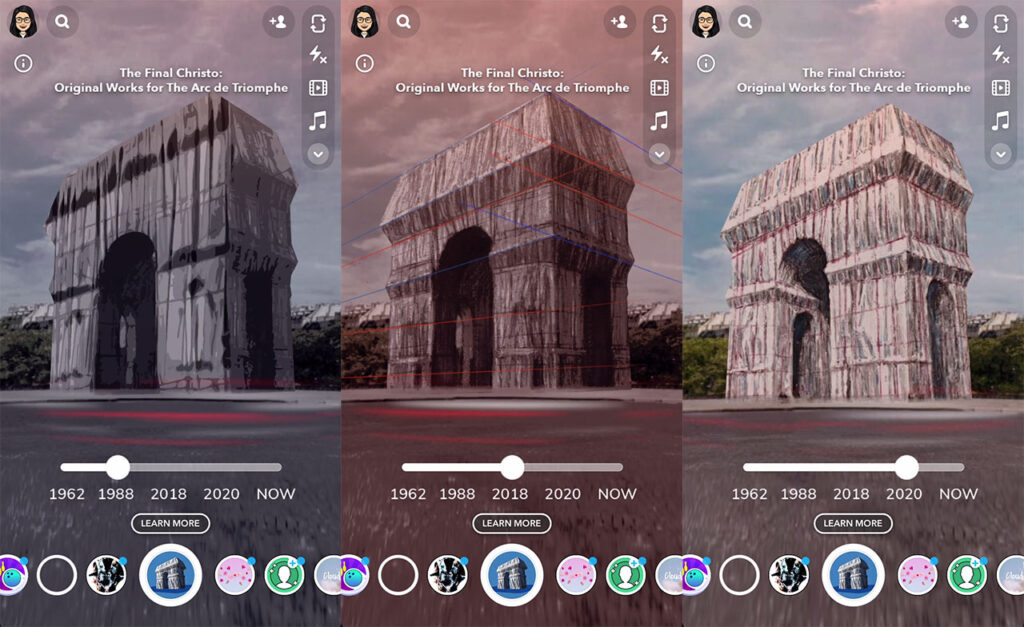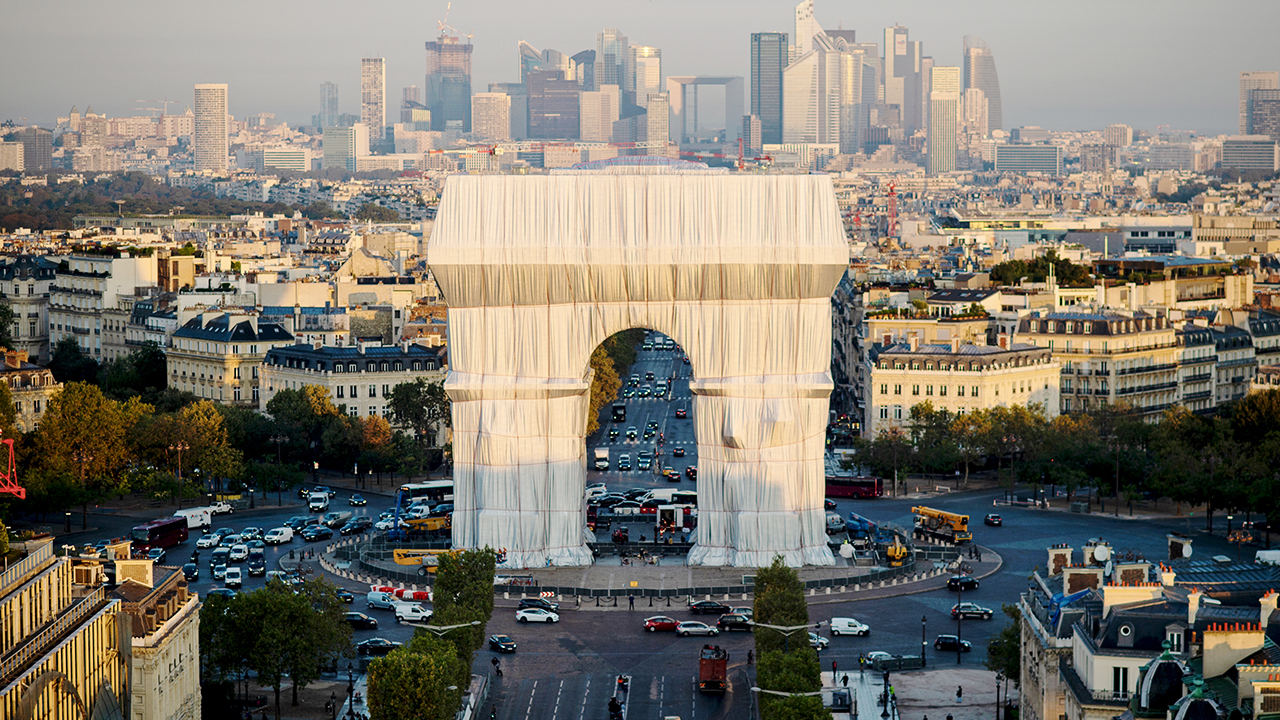For the next two weeks, Paris’ Arc De Triomphe has a new face for the world to see. Swathed in 270,000 square feet of gleaming polypropylene fabric and trussed with 3,000 meters of red ropes, the monument to the French Revolutionary Wars has been wrapped per the specifications and vision of Christo, the environmental artist, who, with his wife Jeanne-Claude, has masterminded such mammoth installations across the world.
Since the early 1960s, Christo and Jeanne-Claude have wrapped monuments from the German Reichstag to the Sydney Opera House to Paris’ Pont-Neuf, endeavoring to disrupt urban landscapes and impart fresh meaning to public sculptures. These projects don’t just take meticulous planning and engineering, but time. L’Arc de Triomphe, Wrapped was conceived in 1961 and much bureaucratic red tape later, will officially be unveiled tomorrow, more than a decade after Jeanne-Claude’s death and a year after Christo’s passing.
What happened?

The Final Christo Snap Lens offers users a view of Christo’s final installation in augmented reality, with a timeline illustrating the artist’s process. Images: The Final Christo on Snapchat
To coincide with L’Arc de Triomphe, Wrapped, from September 17 to October 3, Sotheby’s is presenting The Final Christo: Original Works for The Arc de Triomphe, an exhibition in its Paris galleries of 24 preparatory drawings the late artist made for his final installation. Put together, they offer a view of the remarkable enterprise that went into wrapping a monument Christo once deemed “so powerful. The Arc has an incredible light and history… It cannot be substituted.”
But for visitors unable to visit the site or Sotheby’s, there’s Snapchat. The auction house and the artist’s estate have teamed up with Snap Inc. for an immersive Snap Lens experience of Christo’s wrapped arch, available globally.
By scanning a Snapcode through the app, users enter a portal displaying the fabric-encased monument in augmented reality, complete with city sounds. A timeline further allows them to switch between views of Christo’s photomontage designs in 1962, 1988, 2018, and 2020, and his realized work in 2021. And of course, there’s also the option to turn the camera on themselves for a selfie in front of the installation.
Why it matters
At a time when travel remains a dicey prospect, these hybrid offerings, blending the physical and virtual, are fast becoming smart solutions for organizations newly aware of the need and possibilities available to connect with audiences beyond their sites. Besides expanding the work’s reach and platform, tapping a social network whose user base, as of a January 2021 count, skews toward 15 to 25-year-olds, further guarantees the attention of younger consumers.
The parties involved here are also no strangers to leveraging technology and digital platforms to attract cultural visitors, whether pre or post-COVID. The Arc De Triomphe has explored virtual reality, and Sotheby’s has hosted online and livestreamed auctions when not dabbling in the metaverse. Snap, on its part, has lent its expertise to cultural institutions such as LACMA, particularly for its Monumental Perspectives project.
And as for Christo, whose public-centered works were fully meant to be temporary events unbound by the walls and demands of an institution, one could imagine such a digital presentation might go some way toward capturing his intentions.
What Snapchat said
“The Final Christo: Original Works for The Arc de Triomphe Lens shows how the Snapchat Camera continues to play a transformative role in how people experience what’s around them, combining what they see in the real world, with all that’s available to them in the digital world. Christo and Snap’s shared vision of making art accessible to all and empowering people to tap into their own creativity inspired the Lens, making this partnership a natural fit.” — Snapchat statement



